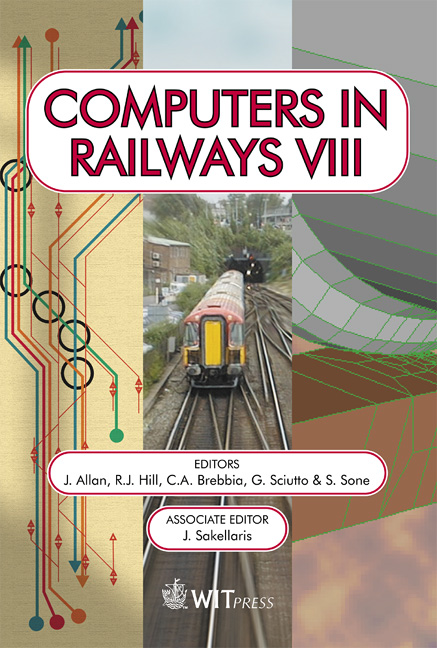An Integrated Tool For Stepwise Construction Of Timetables, Through Simulation, And Subsequent Use In Traffic Control Systems
Price
Free (open access)
Transaction
Volume
61
Pages
6
Published
2002
Size
383 kb
Paper DOI
10.2495/CR020921
Copyright
WIT Press
Author(s)
F Grönberg, I Frisén Bohlin, R Andersson & P Lindström
Abstract
The quality of a transport solution depends on how well the timetable uses the available resources and also depends on the robustness of the timetable. A robust timetable ensures that the availability and service of transport is not unnecessarily compromised when disturbances occur. Also, the work needed to construct the timetable and introduce it in daily operations should be minimised. This paper presents a traffic-planning tool that takes a wide grip on timetable management. Apart from constructing timetables, it also introduces the timetable in the daily operations. It uses a train traffic simulator that derives passage times while identifying and solving conflicts. Thereby, the timetable may be optimised in a stepwise manner. By including disturbance patterns in the simulations, robustness of the timetable is considered. Due to the ability of the simulator to generate passage times, a timetable may be constructed with a minimum of input data. The tool introduces the timetable in daily operations through producing printouts and control sequences for use in the traffic control system. The tool is used in railway operations of Stockholm Transport, SL, in Sweden. A close integration of traffic planning and traffic control has been accomplished through the automatic regeneration of control sequences when the traffic situation forces a change in the timetable. When a traffic controller requests new control sequences and a changed timetable, these are delivered within a minute. The control sequences contain the sequence of different control operations utilised by the traffic control system for automatic train dispatching. The integration of the traffic planning and traffic control systems in daily operation has decreased the workload on traffic controllers, thereby improving the efficiency of traffic control operations.
Keywords





